Other Parts Discussed in Thread: TL431
I'm evaluating the possibility to use the UCC256403 in my current design.
Because of mechanical restrictions I can't implement a direct feedback
from secondary side using the common TL431/optocoupler combination.
Secondary side's output will be used to control my plant (maybe controlled system is a better translation for "Regelstrecke").
I want to convert plant's output to a voltage, which I feed via
an OP-AMP and the TL431/optocoupler combination back to the UCC256403.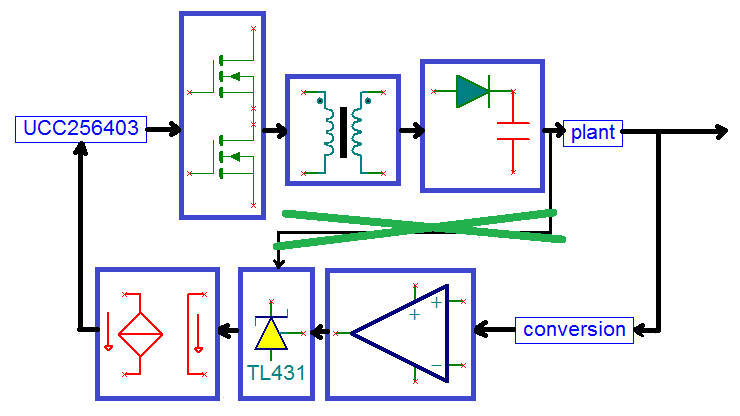
I've emulated that approach with an EVM-020 board.

The conversion block I've relised with a simple voltage divider 12V => 9.75V
and by removing R56 I instructed the EVM-020 circuit to regulate to that 9,75V.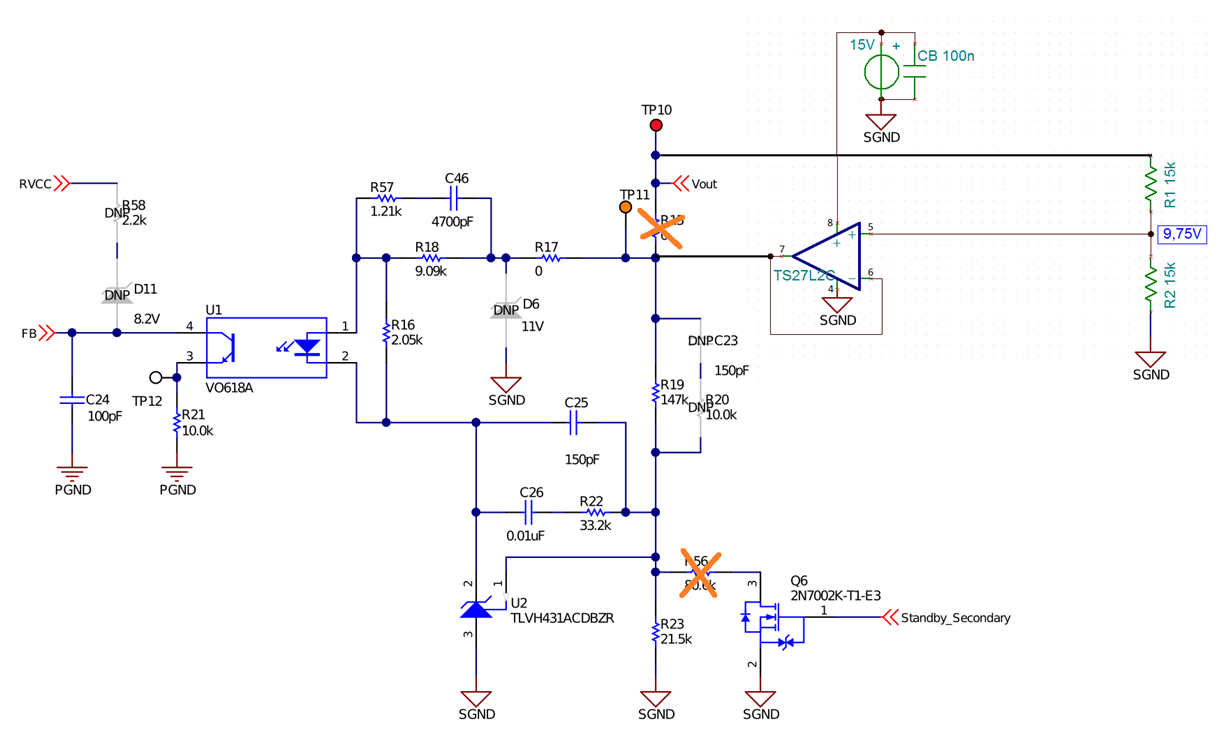
It seems, the approach works, when I test it with load steps,
even though the regulation doesn't work very "fine". 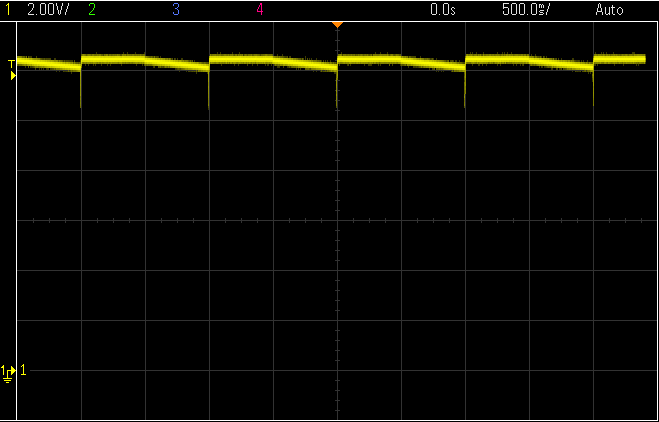
I think, the poor regulation ist a result of an low pass
I've added into the feedback pass by using an OP-AMP (the only one
fast available) with a small gain bandwidth product.
Because I suppose, my plant has an even lower cutoff frequency,
I've lowered the cutoff frequency of the OP-AMP even more.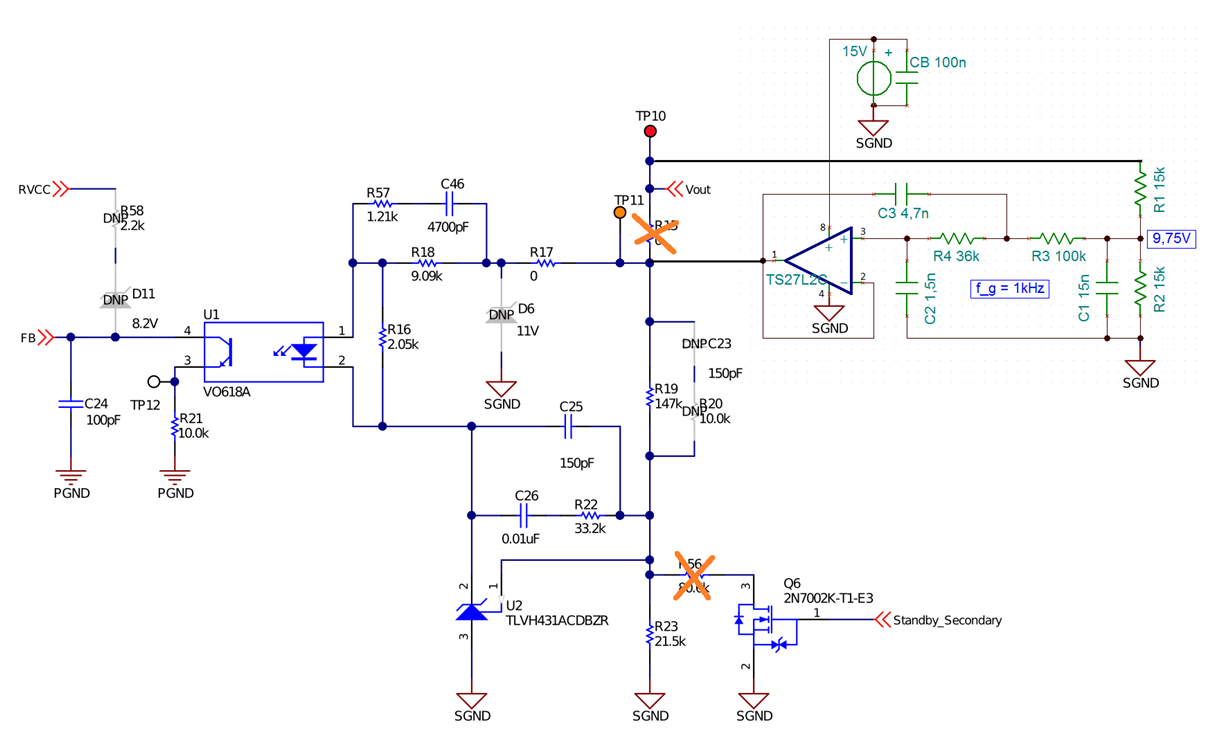
As feared, the regulation will fail to work then!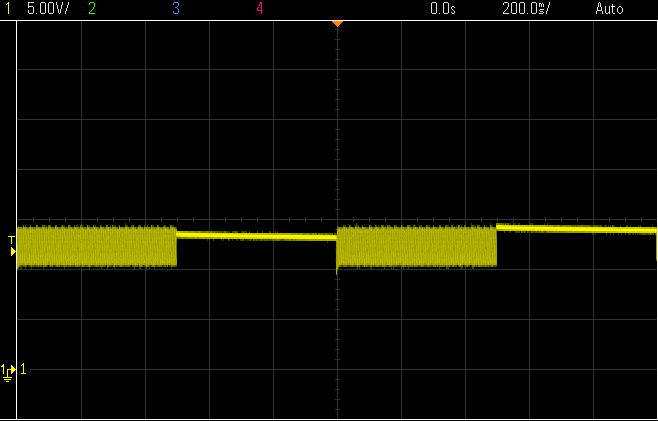
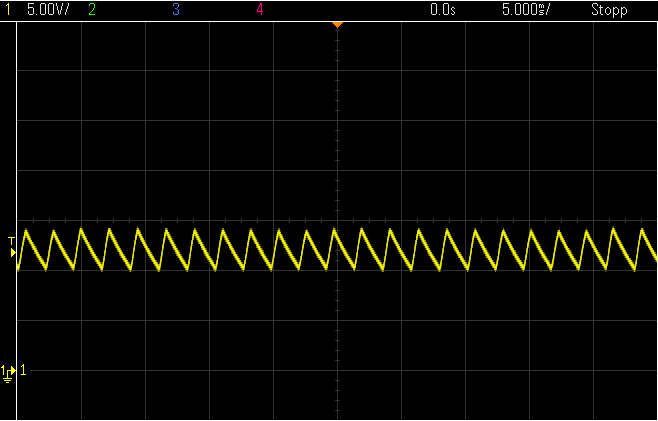
Is there a chance, to manipulate UCC256403's "aggressive" regulation behavior,
it will worked also correctly with a "low pass filter" in the control loop - making it "slower"?
Which components I have to change then?


